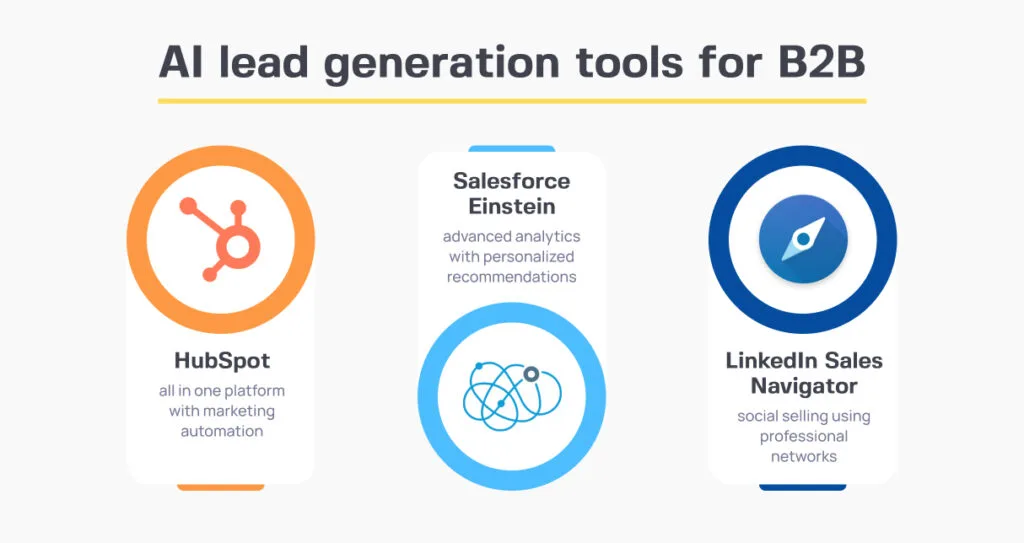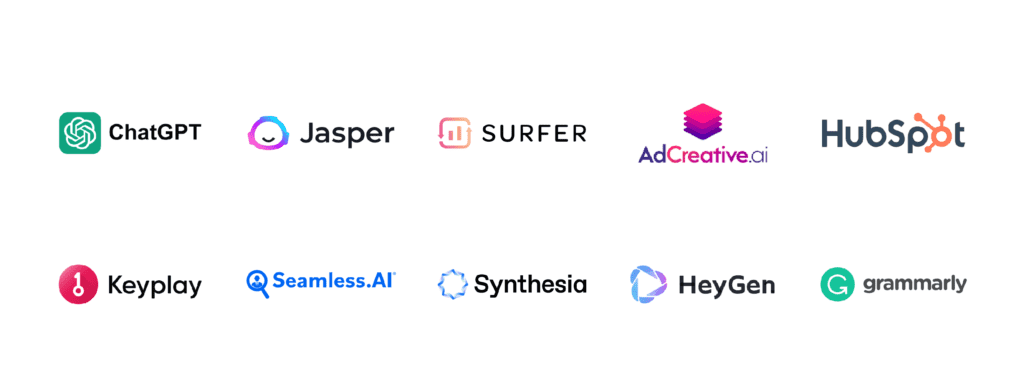Common challenges in adopting Growth Systems For B2B and how to overcome them
AI Automation for B2B: Approaches to Boost Your Business Performance
AI automation in the B2B field offers a crucial chance for companies to enhance their performance. By simplifying procedures and enhancing decision-making, services can achieve considerable performances. The effective combination of AI requires mindful consideration of various aspects. Understanding which areas to automate and selecting appropriate devices are just the start. The potential for transformation increases crucial questions about execution and recurring analysis. What strategies will ensure lasting success in this advancing landscape?
Comprehending AI Automation in B2B Context
As companies progressively seek effectiveness and development, comprehending AI automation in the B2B context ends up being vital. AI automation leverages advanced innovations to simplify procedures, enhance decision-making, and improve total efficiency. By incorporating AI tools, companies can maximize procedures such as supply chain monitoring, consumer partnership administration, and data evaluation. These modern technologies can examine substantial amounts of information rapidly, providing workable insights that drive critical efforts. Additionally, AI-driven automation decreases human error and releases up employees to concentrate on more complicated jobs. By fostering cooperation between human knowledge and maker capacities, services can achieve an one-upmanship. Ultimately, recognizing AI automation is essential for B2B organizations aiming to grow in a progressively digital market.
Identifying Locations for Automation
In the mission for effective AI automation in B2B, it is vital to identify particular areas where automation can yield substantial advantages. This consists of evaluating job monotone, exploring chances for information handling, and determining workflow traffic jams. By concentrating on these elements, companies can enhance procedures and improve productivity.
Task Monotone Assessment
Job monotone assessment plays a vital role in determining areas ripe for automation within B2B procedures. Growth Systems For B2B. This procedure includes examining day-to-day jobs to figure out which are repetitive and time-consuming, thereby preventing productivity (Growth Systems For B2B). By scrutinizing process, services can identify certain functions that call for excessive manual input, such as data entry, billing handling, or customer follow-ups. Recognizing these repetitive tasks allows companies to assign sources better, enhancing overall efficiency. Additionally, automation can minimize human error, simplify operations, and liberate workers to focus on higher-value activities. Carrying out an extensive task repetitiveness analysis equips B2B companies to embrace targeted automation methods, ultimately driving improved efficiency and competitive benefit in the marketplace
Information Processing Opportunities

Operations Bottleneck Identification
Recognizing workflow traffic jams is a critical step in realizing the full benefits of automation within B2B organizations. These traffic jams commonly show up as delays, resource restrictions, or ineffective processes that hinder efficiency. To efficiently determine these locations, companies can perform complete evaluations of their process, making use of metrics such as cycle time and throughput. Engaging staff members in discussions concerning pain points can additionally give beneficial understandings. Organizations can prioritize them based on impact and expediency for automation once traffic jams are determined. By strategically addressing these inefficiencies, B2B companies can improve operations, improve collaboration, and inevitably enhance total performance. This aggressive technique to operations assessment lays the foundation for effective automation efforts that drive business growth.
Selecting the Right AI Equipment and Technologies
As companies increasingly transform to AI to improve their operations, selecting the right devices and technologies ends up being important for achieving wanted results. Organizations has to assess their details requirements and objectives, considering elements such as scalability, compatibility, and user-friendliness. An extensive market evaluation can aid identify leading AI solutions customized for their market. Furthermore, services ought to analyze the technical infrastructure called for to sustain these devices, making certain smooth integration with existing systems. Data security and compliance with laws are additionally vital factors to consider that influence tool choice. By concentrating on these requirements, business can make educated choices that drive performance and performance, eventually resulting in boosted company efficiency. The best AI tools encourage companies to innovate and keep an one-upmanship on the market.
Developing a Strategic Execution Plan
An effective calculated application strategy for AI automation in B2B needs clearly defined key objectives. Furthermore, organizations need to evaluate their present abilities to identify gaps and possibilities for renovation. Continuous tracking and modification of the technique will certainly guarantee alignment with evolving business demands and innovation advancements.
Specify Secret Purposes
To ensure effective AI automation in B2B atmospheres, defining essential purposes is crucial for creating a tactical implementation plan. Organizations has to recognize certain, measurable objectives that straighten with their general business strategy. This quality provides a roadmap for the automation process, making sure that initiatives are concentrated on areas that will yield the highest possible impact. Key objectives may include boosting operational performance, boosting client satisfaction, or increasing profits. Establishing these purposes enables teams to prioritize resources successfully and track progression gradually. Furthermore, clear purposes facilitate far better communication amongst stakeholders, fostering collaboration and placement throughout the company. Inevitably, well-defined goals function as the foundation for a robust AI automation strategy that drives company efficiency.
Assess Current Abilities
Prior to implementing AI automation, organizations should extensively analyze their current capacities to determine weaknesses and toughness. This assessment entails analyzing existing technologies, workforce abilities, and operational procedures. By carrying out a thorough audit, organizations can determine areas that need improvement or financial investment. Organizations must also consider their data administration techniques, as the top quality and availability of information are vital for effective AI combination. Comprehending the current technical landscape makes it possible for firms to align their resources and capabilities with their critical goals. Additionally, it is vital to examine business culture and readiness for adjustment, as these elements considerably affect the fostering of AI options. This evaluation offers as the foundation for creating a tactical implementation strategy that makes the most of the potential of AI automation.
Screen and Readjust
Applying AI automation requires a vibrant technique that stresses constant surveillance and modification. Businesses need to develop a strategic implementation plan that integrates normal evaluations of AI efficiency against predefined metrics. This entails monitoring key performance signs (KPIs) to evaluate the efficiency of automation options. By evaluating data, organizations can determine areas for improvement and adjust their AI systems appropriately. Involving with stakeholders throughout the process ensures that the automation straightens with service purposes and customer demands. Additionally, cultivating a culture of adaptability enables firms to respond quickly to altering market conditions and technological advancements. Growth Systems For B2B. Ultimately, recurring tracking and change not only improve functional efficiency but likewise drive continual business performance in the affordable B2B landscape
Ensuring Information Quality and Integration
As organizations progressively rely upon AI automation in B2B processes, guaranteeing data high quality and combination comes to be essential for success. Premium data is necessary for exact analytics, educated decision-making, and reliable customer engagement. Data need to be cleansed, standard, and validated to eliminate errors and variances that can bring about illinformed understandings. In addition, seamless combination across different platforms and systems Learn More Here is necessary; diverse data silos prevent automation initiatives and minimize functional efficiency. Organizations ought to embrace robust information administration structures and utilize sophisticated tools to help with information assimilation while preserving high quality standards. By prioritizing these elements, companies can enhance their AI automation initiatives, inevitably resulting in improved efficiency and a competitive benefit in the B2B landscape.
Determining Success and ROI of AI Initiatives
Exactly how can companies successfully measure the success and return on investment (ROI) of their AI campaigns? To evaluate effectiveness, services ought to develop clear, measurable goals straightened with calculated objectives. Trick performance indications (KPIs) such as cost financial savings, income development, and productivity renovations can give valuable understandings. Organizations commonly conduct standard assessments before implementing AI, allowing them to contrast pre- and post-implementation metrics. Furthermore, assessing client complete satisfaction and involvement can disclose the impact of AI on customer experience. Frequently reviewing these metrics assists in refining AI methods and guaranteeing positioning with business goals. By utilizing an organized method to dimension and evaluation, organizations can properly assess the performance of their AI campaigns and make notified choices concerning future investments.
Getting Rid Of Obstacles in AI Fostering
Lots of companies recognize the possibility of AI to change their procedures, they often run into significant challenges during adoption - AI Automation For B2B. Trick hurdles include a lack of skilled workers, which interferes with the effective implementation and administration of AI modern technologies. Organizations also deal with assimilation concerns, as existing systems may not work with brand-new AI solutions. Furthermore, worries regarding data privacy and safety can bring about resistance in totally embracing AI abilities. Resistance to alter from staff members can further complicate the shift, requiring extensive training and interaction approaches. To get over these obstacles, companies need to invest in talent development, guarantee robust information administration, and cultivate a culture that accepts technology, inevitably leading the means for successful AI integration and enhanced company performance
Frequently Asked Questions
How Can AI Automation Improve Client Relationship Management in B2B?
AI automation can improve consumer partnership management in B2B by improving interaction, offering individualized communications, evaluating client information for understandings, automating follow-ups, and boosting response times, inevitably cultivating more powerful connections and driving sales growth.
What Industries Advantage A Lot Of From AI Automation in B2B?
Manufacturing, financing, healthcare, and logistics industries profit most from AI automation in B2B. These sectors take advantage of automation to streamline procedures, enhance information analysis, boost client communications, and ultimately increase functional effectiveness and earnings.
How Does AI Automation Effect Worker Duty in B2B Companies?
AI automation transforms worker functions in B2B firms by enhancing jobs, decreasing recurring work, and allowing team to focus on critical initiatives. This change boosts efficiency and cultivates a culture of technology and adaptability.
What Are the Prices Connected With Applying AI Automation?
The prices connected with implementing AI automation consist of initial software acquisition, framework upgrades, training expenses, recurring upkeep, and prospective assimilation obstacles. Minarik AI. Business need to additionally think about long-lasting functional shifts and worker adjustment expenditures in their financial planning
Just How Can Companies Make Certain Ethical AI Use in Their Workflow?
Organizations can guarantee ethical AI use by developing clear standards, advertising openness, performing routine audits, involving diverse stakeholders, and prioritizing data privacy. Constant training and understanding programs even more boost understanding and adherence to ethical practices.
